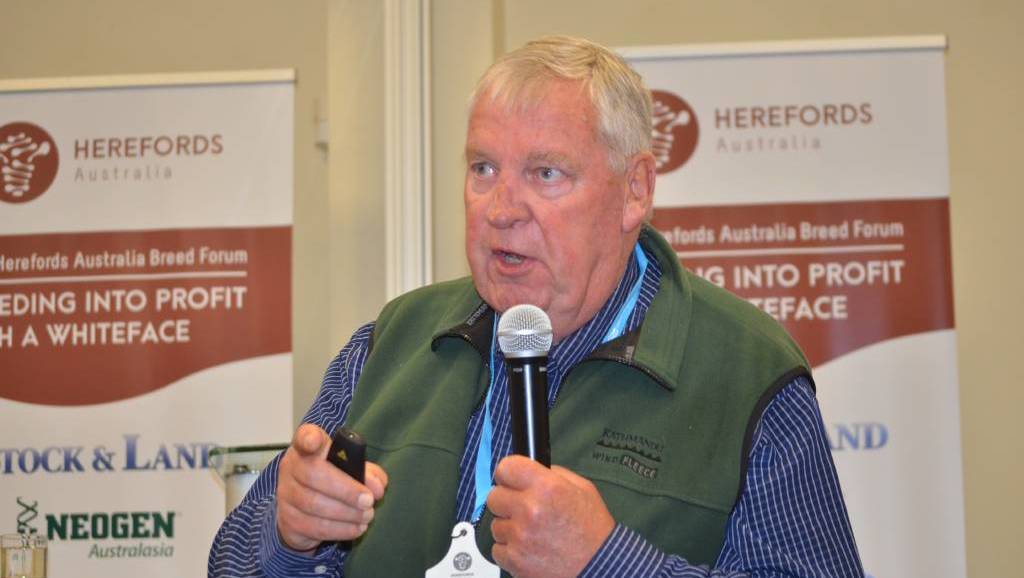By Phil Holmes

Farm business benchmarking first appeared in Australia over 40 years ago, starting with the cropping industry. The livestock industry soon followed with the Victorian DPI Monitor Farm Study being, arguably, the first serious attempt in the early 70’s. It is still there today.
By today’s standards those early versions were rather simplistic, but you have to start somewhere. Increased knowledge and experience have made significant contributions to the process over time.
I have been very fortunate to have had three great mentors in the early years of my career and I would not have had the career fulfilment that I have enjoyed without them. One of them was a Cooma NSW based entrepreneurial accountant, Mick Boyce who was always looking for ways to add value to client relationships. Mick taught me a great deal about business, but it was, to some extent, a two-way street because I was able to teach him about many aspects of beef, sheep and wool production. He approached me one day with the proposition that he wanted to seriously ramp up the quality and scope of livestock benchmarking.
Mick brought three key elements to the table. Firstly, his accounting skills were superb. Secondly, he wanted to add cost of production to the list of enterprise level key performance indicators, a first ‘every other commodity industry knows their cost of production, why not agriculture?’, he said. Thirdly, he had worked out a robust and rigorous method to allocate overhead expenses to livestock enterprises when there were two or more of them, plus cropping, in the one business. You have to take all expenses into account if you want to derive cost of production.
At one point, Mick said to me ‘The notion that overhead expenses are fixed, is a nonsense. The more you look at this, the more you see that overhead expenses vary on a number of fronts, especially between enterprises, mainly mediated through total labour expenses’. When you understand this, it becomes clear that gross margin analysis is seriously inadequate. If you rely on gross margin outcomes, the GM can often stand for Grossly Misleading, less so with cropping than livestock.
So, in 1992 we started benchmarking multi enterprise agricultural businesses, calculating and reporting on the profit, cost of production and other key measures for each enterprise. The process has evolved immeasurably since then, and a lot has been learnt along the way.
Today there are a number of service providers offering a benchmarking service to grazing businesses. Having discussed the evolution of benchmarking, it is important to also discuss its role and purpose, at least as I see it. In essence, it is just another tool to help improve business performance, and an imperfect one at that (no one tool does everything).
Some key considerations are:
- At the start, you have to accept that it is not a contest or a race.
- It is a process primarily designed to help you understand the strengths of your business and to identify the areas that need improving. It also measures the impact of management changes over time. In other words, its primary purpose is internal.
- Inter-farm comparisons are interesting and can be useful, but are very much secondary. They are complicated by seasonal conditions, the stage of the business in its life cycle and other issues.
- It provides a solid basis for informed discussions among profit-driven producers on what performance is achieved in various aspects of the business, what is achievable, and how to improve performance.
There are some that are critical of agricultural benchmarking, however their criticisms are based more around agricultural benchmarking measures and practices of 30 or so years ago, than those in use today. The fact that benchmarking is an imperfect process is also used by the critics as a reason to dismiss it. We agree that it is imperfect; democracy is also imperfect, but we reckon we’d be best sticking with it.
We have reported the results in the Australian Beef Report on a regional basis and it is tempting to look at the data and conclude that some regions perform better than others. But while this may be true to some extent, it misses the main point, namely individual business performance. There is more variation within regions than between them. Within a region, there is a stark difference between a sustainable business and a problematic one. Understanding those perennial factors which separate the top performers from the rest (within and across regions) is edifying.
In summary, benchmarking has evolved over the decades. It is a resource that many managers of highly profitable agricultural businesses find invaluable in informing and evaluating their decision-making. It is not, however, a panacea, and it never will be, just a tool in the never-ending quest for improvement.
– Phil Holmes has worked with agricultural businesses in every state and territory. He is an Adjunct Professor at the University of New England, and co-author of the recently released ‘Australian Beef Report: 2020 Vision’, more information on which is available at www.bushagri.com.au/beef .
This article was published by farmonline National on 09/07/20.
